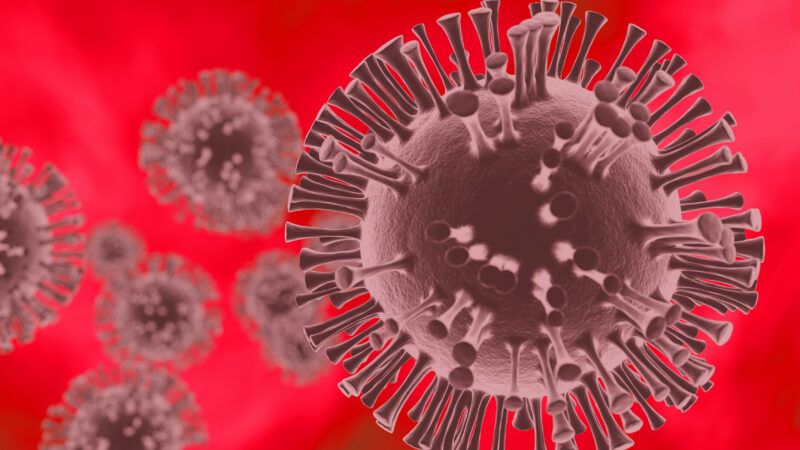Everything Got Worse During COVID
By almost every measure, America during the pandemic was a more dangerous, deadly, and dysfunctional place.

Last week, Reason's Billy Binion reported on some undersung good news: American murder rates are falling fast. This year could end up being the least violent year on record.
This is, of course, a welcome development by itself. It's an especially laudatory trend, coming as it does on the heels of a massive murder spike during the pandemic, when homicides rose by 30 percent in the average U.S. city.
The COVID crime wave is well understood by now. The all-cause rise in mortality during the pandemic is a little less appreciated. No matter how you slice it, America during COVID was a sicker, deadlier, more dangerous, and generally more dysfunctional place.
Between 2019 and 2021, drug overdose went up some 55 percent and traffic fatalities rose 20 percent.
These fatalities, alongside an estimated 1.2 million COVID deaths, helped push the country's death rate from 723.6 deaths per 100,000 people in 2019 to a high of 879.7 in 2021.
Remarkably, only suicides seemed to have resisted the rising death trend, falling in 2020 before rising slightly above pre-pandemic levels in 2021.
Mercifully, murders, traffic deaths, and overdoses are now all falling from their pandemic-era highs. (Suicides continue to climb.) But the overall age-adjusted death rate in 2023 (the last year for which we have complete data) is still above pre-COVID levels.
COVID was certainly a public health disaster. The effort to combat it by pausing day-to-day social and economic life created its own disasters for people's health and well-being.
How much of that latter disaster can be blamed on formal lockdowns and stay-at-home orders vs. ubiquitous (albeit voluntary) public health guidance to socially distance, to individuals' own natural reticence to be around each other in the middle of a pandemic is a worthy topic of debate.
The top-line takeaway remains the same: going to work, church, or one's chosen "third place" goes a long way toward keeping people alive and sane. When sociability falls, antisocial behaviors spike.
Governments' massive emergency expansion of the welfare state seemingly did little to ease the pain.
Stimulus checks, cash transfers, tax credits, and expanded unemployment insurance pushed the poverty rate down. This on-paper improvement in people's financial condition couldn't stop them from driving more dangerously, doing more dangerous drugs, and killing each other more.
Shutting down whole swaths of the economy, and then paying people to stay home, caused its own ill effects.
The U.S. Misery Index—a combined measure of the unemployment and inflation rates— rose from 5.44 in 2019 to a peak of 11.65 in 2022. It's currently at 6.98.
At his confirmation hearing to be director of the National Institutes of Health (NIH), Jay Bhattacharya was unapologetic about his prior vocal criticism of society-wide stay-at-home orders. States like Florida, with its lighter, shorter lockdown, ended the pandemic with a lower all-cause mortality than archrestrictionist California, he noted.
It's a sign of the times that none of the Democrats during that hearing pushed back on this particular point.
If history is any guide, the pandemic will quickly fade from the collective memory. One hopes that this particular lesson learned—that society can't just be turned off and on again without courting disaster—sticks.
